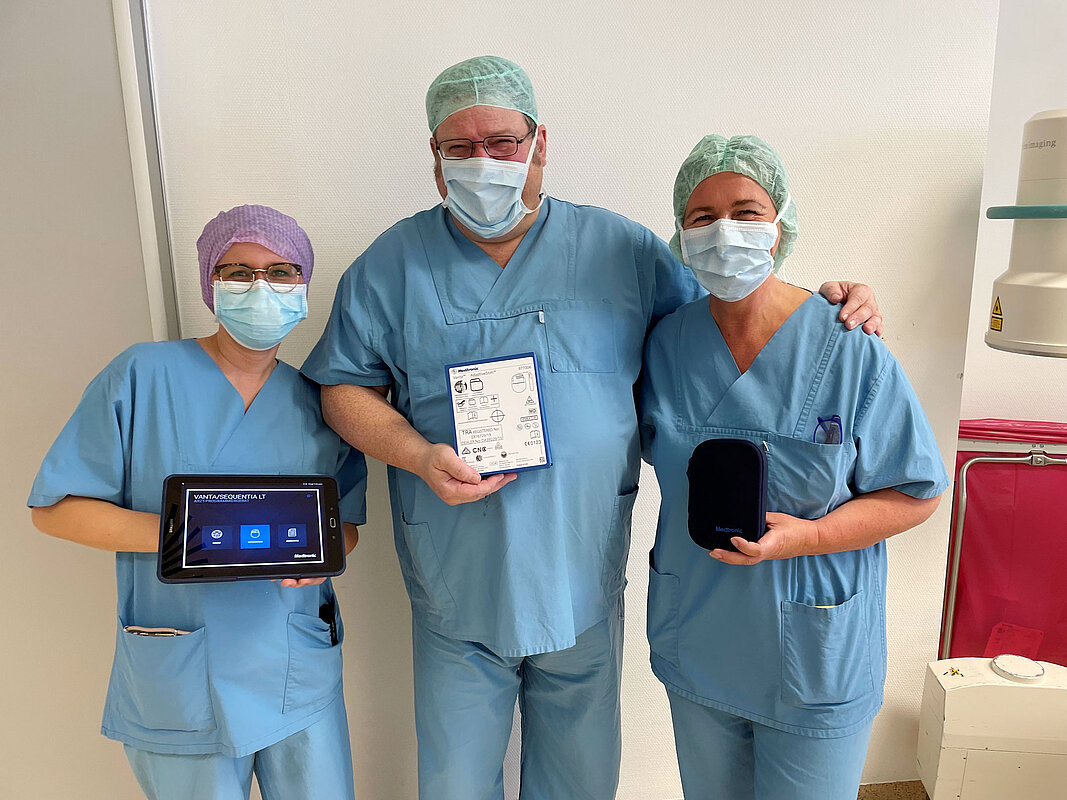Center for Special Pain Medicine: Extended life of pain pacemakers and operation with tablet
According to the German Pain Society, up to 16 million people in Germany suffer from chronic pain. Their quality of life is severely restricted as a result. "If drug therapy has no effect or even puts more strain on the patient, pain pacemakers can be used here," says Dr. Wolfgang Welke, head physician of the Center for Special Pain Medicine at the Hellersen Sports Clinic, pointing out one of many ways in which pain patients can be helped. He and his team are often the last hope for patients who are already considered out of treatment elsewhere.
The neurostimulators used in this case are placed under the skin and deliver weak electrical pulses through an electrode near the spinal cord to prevent pain signals from being transmitted to the brain. The patient feels only a slight tingling sensation. "We have been working with the pacemakers since 2002 and have had good experience with them," says Dr. Wolfgang Welke. In addition to chronic pain, they are used, among other things, for back pain, nerve pain, extremity pain, circulatory disorders, and pain after surgery, for example on the spine. Recently, the chief physician was able to implant the first pain stimulator of the new generation in Germany.
Pain electrodes in the spinal canal are operated either by an accumulator or a battery. Until now, battery-powered devices had an approximate lifespan of seven to nine years, which was longer than battery-powered devices with five to six years, but they always had to be recharged. The advantage of the new Vanta neurostimulator from Medtronic, which Dr. Welke recently implanted, is that while it is battery-powered and thus does not require recharging, at the same time its lifespan has increased significantly. "This, of course, always depends on the degree of use. But the expectation with the new device is about nine to ten years. That is therefore even longer than the lifetime of the rechargeable devices," explains the chief physician.

Patients also have the option to customize the implanted neurostimulator with a remote control. The stimulator supports the patient by learning and automatically adapting the current flow to the body's posture. Specifically, it looks like this: The electrodes lie on the meninges in the spinal canal. Movement changes the distance to the spinal cord. The neurostimulator's system detects this and automatically compensates for the intensity of the stimulation in the event of a change in distance.
"In our clinic, there is a dedicated pain consultation for neurostimulation, where we particularly look at patients with chronic nerve pain and then consider together whether a pain pacemaker is an option," explains Dr. Welke. Programming by the doctor is done via a tablet. That, too, is a technical advance. With older pacemakers, a magnet was placed on the patient's abdomen and the data read out via an external device. Now this works wirelessly with the tablet via Bluetooth.
"Not every patient with chronic, intractable pain is an ideal candidate for a rechargeable device, so the Vanta Pain Pacemaker is a welcome addition to my portfolio of available treatment options," says Dr. Welke. "The extended battery life, extensive MRI compatibility and automatic fitting are significant benefits for my patient. Of course, the pain pacemakers and leads implanted in our office are also MRI compatible."
Press contact
Sarah Burghaus
Head of Marketing, Corporate Communication & PR, Press Spokesperson
sarah.burghaus@hellersen.de
Marie Schulz
Public Relations
marie.schulz@hellersen.de
